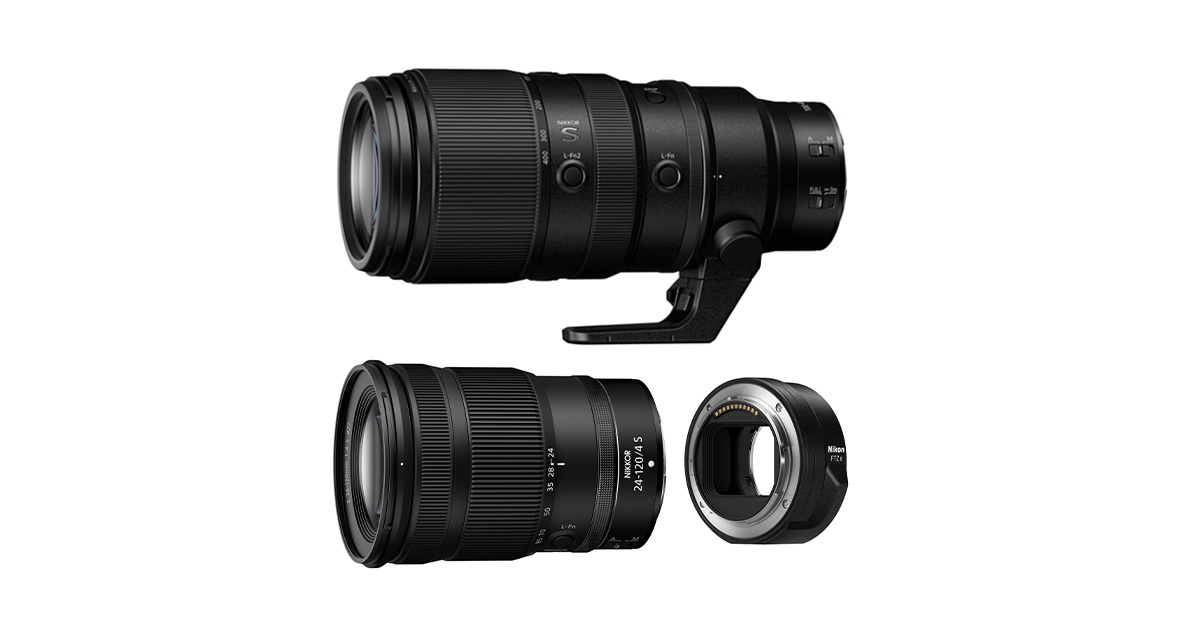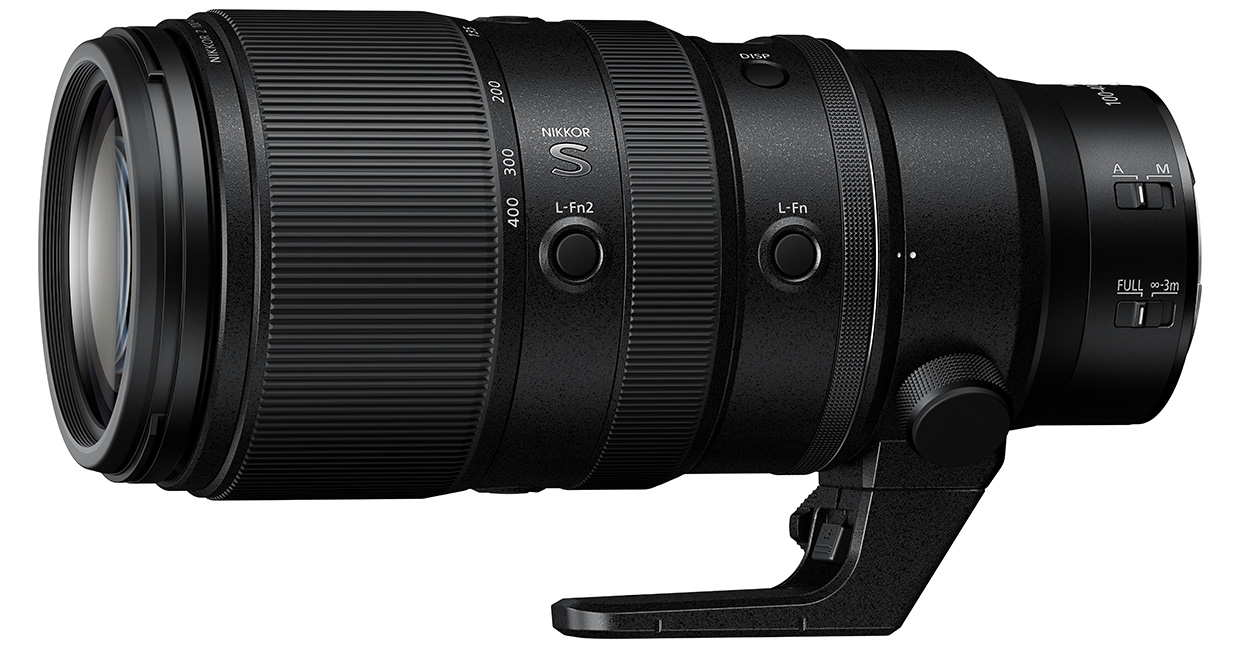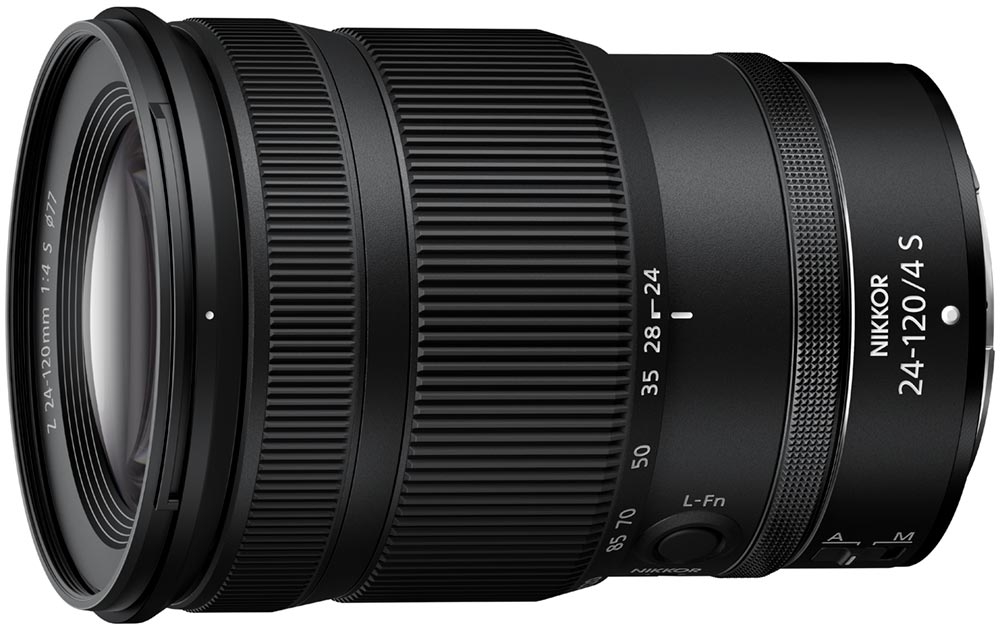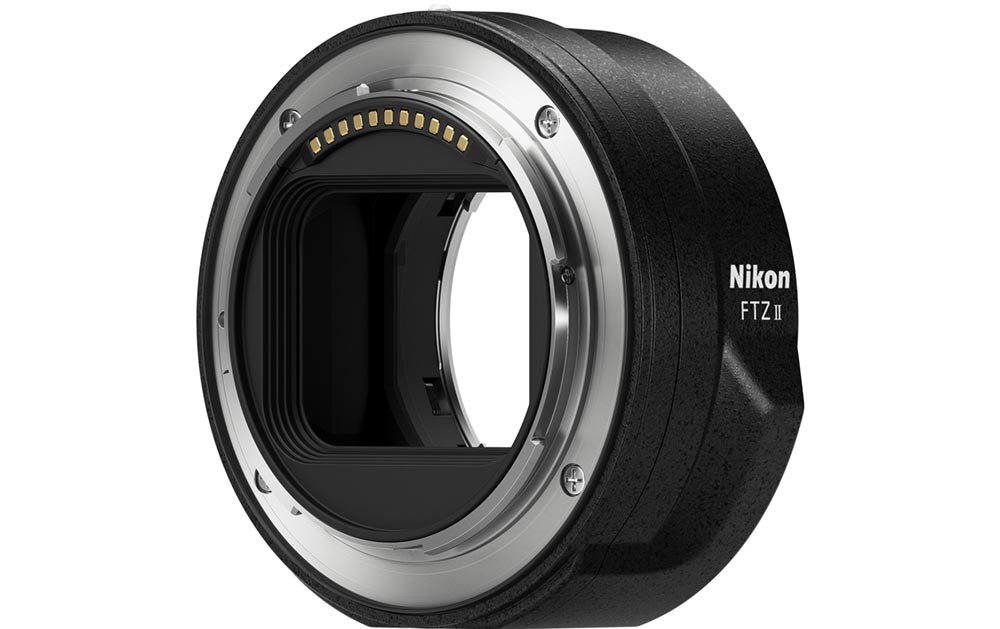info appended
Nikon releases the NIKKOR Z 100-400mm f/4.5-5.6 VR S, NIKKOR Z 24-120mm f/4 S and Mount Adapter FTZ II
October 28, 2021
Further expanding the NIKKOR Z lens lineup
NIKKOR Z 100-400mm f/4.5-5.6 VR S
NIKKOR Z 24-120mm f/4 S
Mount Adapter FTZ II
TOKYO - Nikon Corporation (Nikon) is pleased to announce the release of the NIKKOR Z 100-400mm f/4.5-5.6 VR S, a super-telephoto zoom lens, and the NIKKOR Z 24-120mm f/4 S, a standard zoom lens, that are compatible with full-frame (Nikon FX-format) mirrorless cameras for which the Nikon Z mount system has been adopted, as well as the Mount Adapter FTZ II.
The NIKKOR Z 100-400mm f/4.5-5.6 VR S, the first super-telephoto zoom model in the NIKKOR Z S-Line series*1 of lenses, delivers outstanding resolution from maximum aperture while thoroughly reducing color bleeding and fringing. Despite being a super-telephoto lens that covers a broad focal-length range, it achieves the shortest minimum focus distance of 0.75 m in its class*2 at the maximum wide-angle position. The NIKKOR Z 100-400mm f/4.5-5.6 VR S also realizes the lightest weight of approx. 1,355 g in its class*2, enabling it to be carried around for a long period of time with less burden. As well as this, it employs "Inner Balance Technology*3" — a first for Nikon models, that significantly reduces shifting of the center of gravity when zooming in and out. With its high performance and operability, this lens is certain to stimulate both advanced amateurs' and professional photographers' creativity.
The NIKKOR Z 24-120mm f/4 S, a 5x standard zoom lens that is also a part of the S-Line series of high-resolution NIKKOR Z lenses, achieves sharp rendering with reduced color bleeding. It covers a wide focal-length range at a constant f/4 aperture, attaining beautiful rendering utilizing large bokeh, especially in the telephoto range, for both stills and videos. In addition, the NIKKOR Z 24-120mm f/4 S achieves the lightest weight of approx. 630 g in its class*4, resulting in greatly enhanced portability. Its high maximum reproduction ratio of 0.39x at the maximum telephoto position lets users shoot subjects in large size. This lens will support advanced amateurs and professionals with its outstanding power of expression for a variety of scenes, from exquisite rendering of plants and insects to travel, street snaps, and weddings.
The Mount Adapter FTZ II is designed for Nikon D-SLR users who own NIKKOR F lenses. It allows them to continue using those assets with Nikon's Z mount system as much as possible. By removing the tripod mounting collar from the Mount Adapter FTZ (released in September 2018), the new adapter provides a streamlined design with minimal projections and lighter weight, ensuring stable holding in vertical shooting as well as unobstructed pairing with various accessories. It supports use of approx. 360 types of NIKKOR F lenses from AI type onwards, while shooting with AF/AE*5 and VR*6 is also available with compatible lenses.
Nikon will continue to pursue a new dimension in optical performance while meeting users' needs, contributing to the development of imaging culture, with the hope of expanding possibilities for imaging expression.
- *1The S-Line is a grade of NIKKOR Z lenses that demonstrate outstanding optical performance, adhering to a high standard of design principles and quality control.
- *2Among full-frame interchangeable lenses with a focal length range of 100-400 mm and maximum apertures of f/4.5 - f/5.6 for digital cameras with interchangeable lenses, available as of October 28, 2021. Statement based on Nikon research.
- *3A mechanism that reduces the shifting of the center of gravity as much as possible with lens groups moving in opposite directions for balance. As the front lens group moves forward, when zooming from the wide-angle to the telephoto position, part of the rear lens group moves backward.
- *4Among interchangeable zoom lenses for mirrorless digital cameras with interchangeable lenses equipped with a 35mm film size image sensor, with a focal-length range from 24 mm at the wide-angle end to 105-120 mm at the telephoto end, and a maximum aperture of f/4 or less, available as of October 28, 2021. Statement based on Nikon research.
- *5Only when a lens with a built-in motor is attached. With some limitations according to lens types. For incompatible lenses and accessories as well as other usage information, please refer to Nikon websites.
- *6When a NIKKOR F CPU lens without built-in VR is used, in-camera sensor-shift VR activates to deliver images with effectively reduced image blur. When a NIKKOR F lens equipped with VR is used, the in-lens VR and in-camera VR work together to achieve three-axis blur compensation.
Primary features of the NIKKOR Z 100-400mm f/4.5-5.6 VR S
- Focal length at the maximum telephoto position becomes 560 mm with the Z TELECONVERTER TC-1.4x, and 800 mm with the Z TELECONVERTER TC-2.0x, while maintaining high resolution*1.
- Multi-focusing system that utilizes two STMs (stepping motors), enabling fast, precise and quiet AF operation for both stills and videos.
- Employs an optical vibration reduction function with an effect equivalent to a shutter speed 5.5 stops faster*2, which is the highest among NIKKOR Z lenses.
- While lateral chromatic aberration is optically corrected, axial chromatic aberration is also significantly reduced via the adoption of Super ED glass and ED glass elements, providing clear images across the entire frame from maximum aperture.
- Nikon's original Nano Crystal Coat and ARNEO Coat are both adopted to effectively reduce ghost and flare effects even in backlit situations.
- The highest maximum reproduction ratio of 0.38x (at the maximum telephoto position) in its class*3 that lets users shoot subjects in large size.
- Employs "Inner Balance Technology" — a first for Nikon models, that reduces shifting of the center of gravity when zooming in from the wide-angle position to the telephoto position.
- The shortest*3 rotation angle of 80 degrees in its class for the zoom ring enables users to rotate the zoom ring from the wide-angle position to the telephoto position in just one motion, without adjusting lens holding.
- A smooth and quiet control ring that realizes high operability.
- Features a design giving consideration to video recording, including effectively reduced shifting of a focus position when zooming in/out and the angle of view when adjusting focus.
- Superior dust- and drip-resistant capability*4, high reliability that comes from both robustness and weather resistance, and excellent anti-fouling performance via the employment of fluorine coat are realized.
© saizou
Primary features of the NIKKOR Z 24-120mm f/4 S
- Covering the telephoto range up to 120 mm, a wide variety of scenes can be handled with high optical performance across the entire zoom range for both stills and videos.
- A minimum focus distance of 0.35 m allows users to get closer to their subjects.
- Multi-focusing system that utilizes two STMs (stepping motors), enabling fast, precise and quiet AF operation for both stills and videos.
- Effective compensation for chromatic aberration with the employment of three ED glass, one aspherical ED glass, and three aspherical lens elements in the optical system.
- Nikon's original Nano Crystal Coat and ARNEO Coat are both adopted to effectively reduce ghost and flare effects even in backlit situations.
- A smooth and quiet control ring that realizes high operability.
- Features a design giving consideration to video recording, including effectively reduced shifting of a focus position when zooming in/out and the angle of view when adjusting focus.
- Superior dust- and drip-resistant capability*4, and excellent anti-fouling performance with the employment of fluorine coat are realized.





